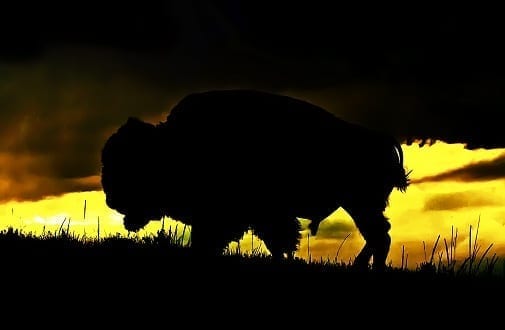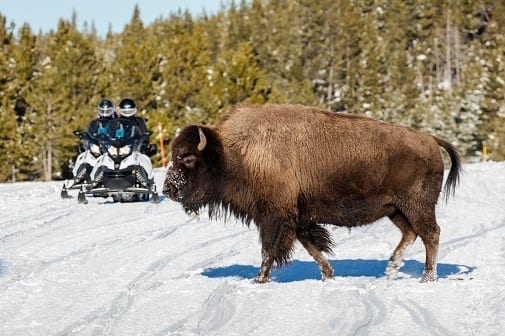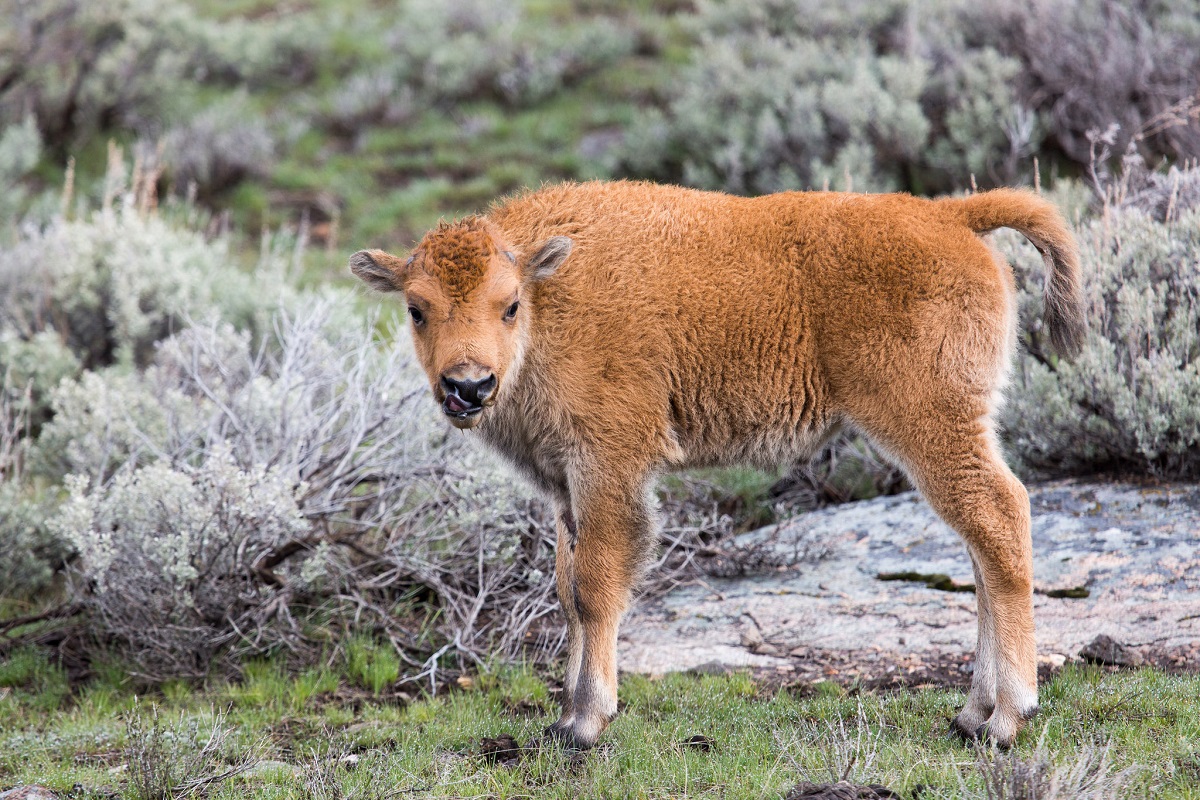Did you know that the so-called American buffalo is, in fact, a bison? Surprising, right? There are only two true buffalo species: the Water Buffalo in Asia and the Cape Buffalo in Africa. Our furry friend here has been mistakenly called a buffalo for centuries.
History shows that early settlers called bison ‘bufello’ by mistake because they looked like true buffalo. Hence, the name buffalo prevailed for this magnificent creature, but the question remains – will we ever stop calling them that?

Bison. Photo by Tress Chapin
The American bison sports a large shoulder hump, massive head, and thicker fur. Buffalo have larger horns and less hair.
When people visit Yellowstone National Park, they often think of Old Faithful first. But it’s the bison that really steal the show and make a lasting impression on visitors. These majestic creatures have overtaken the iconic geyser as the park’s must-see attraction, and encountering them in the wild is a once-in-a-lifetime experience that’s hard to forget. From getting caught in a “bison jam” to witnessing their sheer size and power up close, it’s no wonder these incredible beasts have become the new face of Yellowstone.
Yellowstone is the only place in the United States where wild bison have lived since prehistoric times. Yellowstone bison are special because they have the biggest bison population on public land in the country. They are also one of the few bison herds that have not mixed with cattle.
Unlike most other herds, this population has thousands of individuals that are allowed to roam relatively freely over the expansive landscape of Yellowstone National Park and some nearby areas of Montana. Part of the herd migrates out of Yellowstone to a nearby “nursery” are just north of West Yellowstone in the spring. Once the calves are born, the herd migrates back to the Park.

Winter Bison, Yellowstone National Park
Bison is not only an iconic symbol of North America but also the largest land-dwelling mammal on the continent. These magnificent creatures can weigh up to a whopping 2,000 lbs (900 kg) for males and 1,100 lbs (500 kg) for females.
With their beautiful dark chocolate-brown fur, adorned with long hair on their forelegs, head, and shoulders, bison are truly a sight to behold. Their short, dense hair on their flanks and hindquarters adds an extra layer of protection against the elements.
And let’s not forget their impressive curved horns that adorn both male and female bison, with males boasting slightly longer ones. One distinguishing feature of bison is their protruding shoulder hump, adding to their already imposing stature.
Cows give birth to calves after 9 to 9½ months of gestation. They are reddish-tan at birth and begin turning brown after 2½ months. Bison may live 12–15 years, and a few live as long as 20 years.
Bison are incredibly fast and agile, able to move quickly through water and reach speeds of up to 35 miles per hour (55 kph). They have the ability to jump over objects about 5 feet (1.5 m) high and have excellent hearing, vision, and sense of smell.
They are social animals that often form herds, which appear to be directed by older females. Group sizes average about 20 bison during winter, but increase in summer to an average of about 200, with a maximum of about 1,000 during the breeding season (known as the rut) in July and August.

Bison Calf by Neal Herbert, YNP
Yellowstone bison feed primarily on grasses and other grass-like plants (more than 90% of their diets) in open grassland and meadow communities throughout the year. They typically forage for 9 to 11 hours daily. Bison are ruminants with a multiple-chambered stomach that includes microorganisms such as bacteria and protozoa to enable them to effectively digest plant material.
Number in Yellowstone – Estimated at 5,500 in August 2016.
WILDLIFE REGULATIONS (Inside and outside of Yellowstone National Park):
- Stay at least 25 yards (23m) from bison and other wildlife and 100 yards (91m) from bears and wolves.
- Do not feed or approach wildlife. You are not safe just because there is a small creek or hill between you – they move quicker than you think and are unpredictable.
- Animals in Yellowstone are wild and deserve respect. Remember, you are a guest in their home when visiting.
Sources: Yellowstone National Park (nps.gov/yell), livescience.com, diffen.com
For other wildlife and bird watching ideas click here.